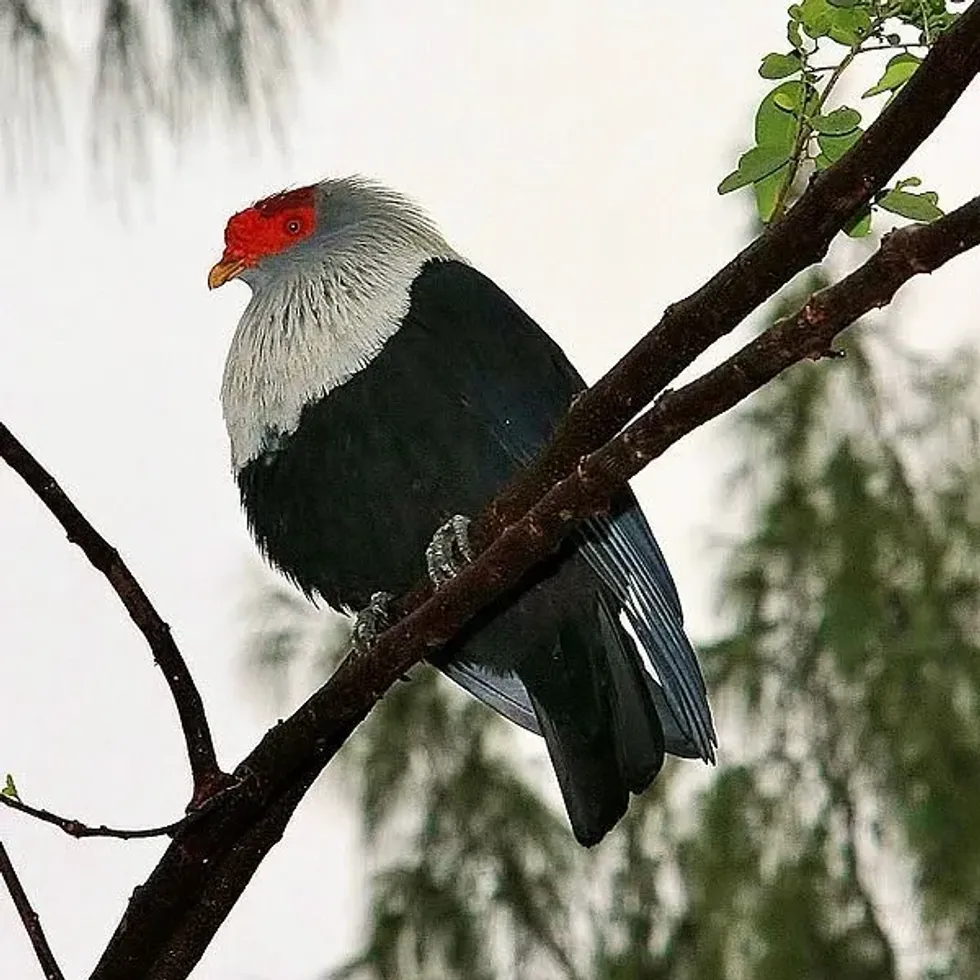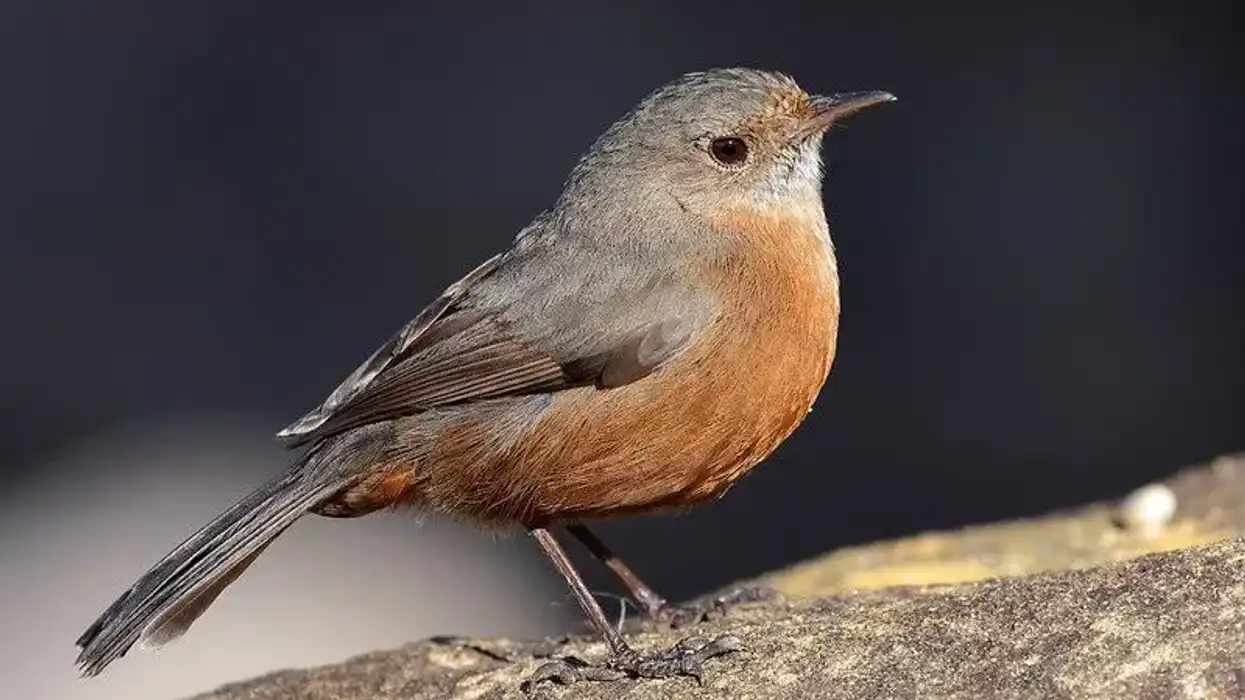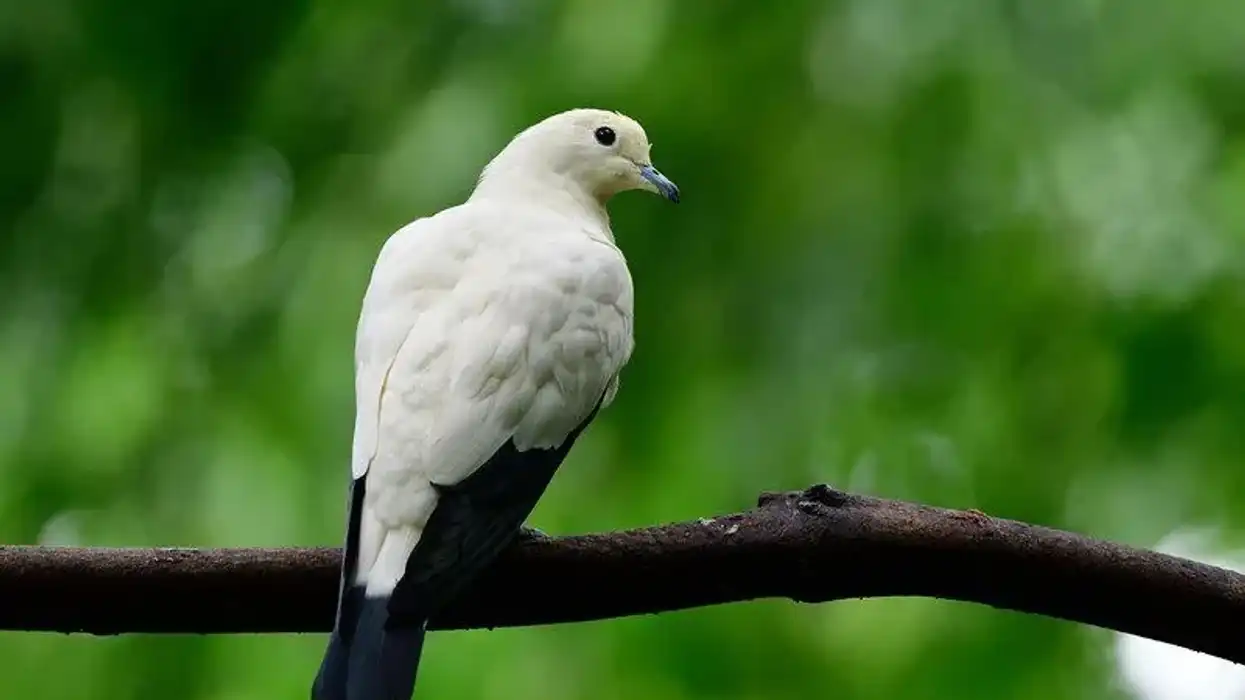The Mauritius blue pigeon (Alectroenas nitidissimus) was the largest of six blue pigeons and the most robust member of the Alectroenas genus. It belonged to the Aves class of the kingdom of Animalia that includes all birds.
It was an endemic species to the Mascarene islands of Mauritius in the Indian Ocean, east of Madagascar and they also colonized Seychelles.
Generally, male pigeons are called cocks and female pigeons are called hens.
However, there were no sex-specific names given to this bird species. The closest genetic relative of the pigeon hollandais is the cloven-feathered dove of New Caledonia, almost 6835 mi (11,000 km) away from the east of Mauritius.
However, the two species separated from each other 8-9 million years ago. Alectroenas blue pigeons are closely related to the pigeon hollandais and are considered as their subspecies.
Other than that, the Madagascar blue pigeon (Alectroenas madagascariensis), the Comoro blue pigeon (Alectroenas sganzini), and the Seychelles blue pigeon (Alectroenas pulcherrima) are the surviving closely related species of this bird species, and they are all native to the islands in the western Indian Ocean.
These bird species were omnivores and their diet included fruits, nuts, mollusks, and other invertebrates, like snails. One of these pigeons was also seen hunting a tadpole for food.
However, they fell prey to crab-eating macaques. According to The International Union for Conservation of Nature (IUCN) Red List of Threatened Species, this blue pigeon has become Extinct.
It coexisted with human beings for 200 years, and it was in the 17th century when destruction and hunting were introduced that there was a decline in the population of these birds.
This species started to become rare. Although some claimed that it could still be found when it was brought to the Netherlands around 1790, exactly three months before dying of edema, and a few shooting incidents thereafter, in 1830, it was thought to have become an Extinct species ever since.
The Mauritius blue pigeon had stiff, white, and pointed hackles around the head, neck, and breast, a dark blue plumage with a red tail. Its hackles were longer than that of any other bird species.
A woman recalled seeing this bird species as being green in color.
It derived its name, pigeon hollandais (Dutch), due to the red, white, and dark blue sequence that resembled the Dutch flag, as pointed out by Pierre Sonnerat, a French naturalist and explorer. Ever since these blue pigeons became Extinct, their exact reproduction process is not known.
However, it is assumed that they followed the usual breeding process by all other pigeons. They made a dove-like 'coo-ing' noise during the day and a winsome call that sounded like 10-12 barf calls in the night.
The male and the female species formed a mating pair at any time of the year and worked together on allaspects of reproduction and raising the young nestlings.
The male pigeon hollandais built the nest, and the female pigeon hollandais laid the eggs after that. Both the male and the female blue pigeons incubated the eggs.
The average litter size was two eggs per clutch, and they hatched 19 days after being laid. These blue pigeons lived alongside the red rail, the broad-billed parrot, the Mauritius owl, the Mascarene gray parakeet, the Mascarene coot, the Mauritius night heron, the Mauritian shelduck, the dodo, and the Mauritian duck.
All these bird species are Extinct too. Their average lifespan was six and a half years. While there is no unique name given to this bird species, baby pigeons are called squeakers, chicks, or squabs.
For more relatable content, check out these Nicobar pigeon facts and pigeon Guillemot facts for kids.
Mauritius Blue Pigeon Interesting Facts
What type of animal is a Mauritius blue pigeon?
This blue pigeon is an Extinct species of the blue pigeon of the Alectroenas genus and Columbiformes order.
What class of animal does a Mauritius blue pigeon belong to?
This blue pigeon belonged to the Aves class of the kingdom of Animalia that includes all bird species.
How many Mauritius blue pigeons are there in the world?
This blue pigeon became Extinct in 1830. Apart from habitat destruction, several factors contributing to its decline were deforestation, trapping terrestrial animals, predation, crab-eating macaques, logging, wood harvesting, and hunting.
Where does a Mauritius blue pigeon live?
These blue pigeons were an endemic species to the Mascarene islands of Mauritius in the Indian Ocean east of Madagascar and also colonized the Seychelles.
What is a Mauritius blue pigeon's habitat?
It was a terrestrial bird and found in the forests of Mauritius.
Who does the Mauritius blue pigeon live with?
These blue pigeons lived alongside the red rail, the broad-billed parrot, the Mauritius owl, the Mascarene gray parakeet, the Mascarene coot, the Mauritius night heron, the Mauritian shelduck, the dodo, and the Mauritian duck. All these bird species are extinct too.
How long does a Mauritius blue pigeon live?
The average lifespan of the pigeon hollandais, owing its name to its similarity with the Dutch flag, was six and a half years.
How do they reproduce?
Ever since these blue pigeons became Extinct, their exact reproduction process is not known. However, it is assumed that they followed the usual breeding process by all other pigeons.
The male and the female species formed a mating pair during any time of the year and worked together on all the aspects of reproduction and raising the young nestlings. The male pigeon hollandais built the nest, and the female pigeon hollandais laied the eggs after that.
Both the male and the female blue pigeons incubated the eggs. The average litter size was two eggs per clutch, and then eggs hatched 19 days after being laid.
What is their conservation status?
According to The International Union for Conservation of Nature (IUCN) Red List of Threatened Species, this blue pigeon has become Extinct. It coexisted with human beings for 200 years and it was in the 17th century when destruction and hunting were introduced that the population of these birds started to decline.
Ever since, this bird has been considered rare.
Some claimed that this bird could still be found when it was brought to the Netherlands around 1790, exactly three months before dying of edema, and a few shooting incidents. In 1830, when it was hunted to extinction, this bird became an extinct species.
Mauritius Blue Pigeon Fun Facts
What does the Mauritius blue pigeon look like?
It is a long, silvery-white, stiff blue pigeon with a pointed neck, indigo plumage, metallic blue scapular feathers and wings, greenish beak with a darker tip, maroon tail, slate-gray legs, reddish-orange iris, and a red patch around the eyes and the cheeks.
Their hackles were longer than that of any other bird species. A woman recalled seeing this bird species as being green in color.
It derived its name, pigeon hollandais (Dutch) due to the red, white, and blue sequence that resembled the Dutch flag, as pointed out by Pierre Sonnerat, a French naturalist and explorer.
 * Please note that this is an image of a Seychelles blue pigeon, one of the subspecies of the Mauritius blue pigeon. If you have an image of a Mauritius blue pigeon please let us know at hello@kidadl.com.
* Please note that this is an image of a Seychelles blue pigeon, one of the subspecies of the Mauritius blue pigeon. If you have an image of a Mauritius blue pigeon please let us know at hello@kidadl.com.
How cute are they?
The Mauritius blue pigeon (Alectroenas nitidissimus) was considered to be a very cute and majestic bird.
How do they communicate?
They made a dove-like 'coo-ing' noise during the day and a winsome call that sounded like 10-12 barf calls in the night.
How big is a Mauritius blue pigeon?
These Mauritius blue pigeons were 12 in (30.4 cm) long, the wings were 8.2 in (20.82 cm) long, the tail was 5.2 in (13.2 cm) long, the culmen was 1 in (2.5 cm) long, and the tarsals were 1.10 in (2.8 cm) long. They were almost the same size as the pigeon Guillemot.
How fast can a Mauritius blue pigeon fly?
The exact speed of these blue pigeons was not determined.
How much does a Mauritius blue pigeon weigh?
Although the exact weight of this Extinct bird species, Columba nitidissima, was not known, the average weight of domestic pigeons is 0.79 lb (358.7 g).
What are the male and female names of the species?
Generally, male pigeons are called cocks and female pigeons are called hens. However, there were no sex-specific names given to this bird species.
What would you call a baby Mauritius blue pigeon?
While there is no unique name given to this bird species, baby pigeons are called squeakers, chicks, or squabs.
What do they eat?
This bird species were omnivores and their diet included fruits, nuts, mollusks, and other invertebrates, like snails. One of these pigeons was also seen hunting a tadpole for food. Some reports suggested that this fed on river mussels, but it was later on discarded.
Are they dangerous?
There is no information provided about the dangers to humans from this bird species.
Would they make a good pet?
Since the pigeon hollandais is an Extinct species, there is no option of keeping it as a pet. However, even if alive, it would not make a good pet.
Did you know...
The largest blue pigeon of the six blue pigeon species are these blue pigeons.
Its former scientific name, Columba nitidissima, was given by Giovanni Antonio Scopoli in 1876. However, it was further changed to Alectroenas nitidissimus, and the IOC World Bird List finally revised it to Alectroenas nitidissima in 2012.
The Mauritius owl (Mascarenotus commersoni) and the small Mauritian flying fox (Pteropus subniger) became Extinct simultaneously as these blue pigeons. These three were the large vertebrates to have become extinct from the Mauritian mainland to date.
Even though pink pigeons exist, they are very rare to find.
Why is the Mauritius blue pigeon extinct?
This blue pigeon became extinct in 1830. This bird species owes its decline to deforestation, habitat destruction. Several factors contributed like trapping terrestrial animals, predation, crab-eating macaques, logging, wood harvesting, and hunting attributed the decline.
What birds were relatives of Mauritius blue pigeon?
The closest genetic relative of Mauritius blue pigeons is the cloven-feathered dove of New Caledonia, almost 6835.1 mi (11,000 km) away from the east of Mauritius.
However, the two species separated from each other 8-9 million years ago. Alectroenas blue pigeons are also closely related to the pigeon hollandais and are considered as their subspecies.
Other than that, the Madagascar blue pigeon (Alectroenas madagascariensis), the Comoro blue pigeon (Alectroenas sganzini), and the Seychelles blue pigeon (Alectroenas pulcherrima) are the surviving closely related species of this bird species, and they are all native to islands in the western Indian Ocean.
Here at Kidadl, we have carefully created lots of interesting family-friendly animal facts for everyone to discover! Learn more about some other birds from our bowerbird facts and hummingbird facts pages.
You can even occupy yourself at home by coloring in one of our free printable Mauritius blue pigeon coloring pages.
* Please note that the main image is of a white-headed pigeon. If you have an image of a Mauritius blue pigeon please let us know at hello@kidadl.com.




 * Please note that this is an image of a Seychelles blue pigeon, one of the subspecies of the Mauritius blue pigeon. If you have an image of a Mauritius blue pigeon please let us know at hello@kidadl.com.
* Please note that this is an image of a Seychelles blue pigeon, one of the subspecies of the Mauritius blue pigeon. If you have an image of a Mauritius blue pigeon please let us know at hello@kidadl.com.



